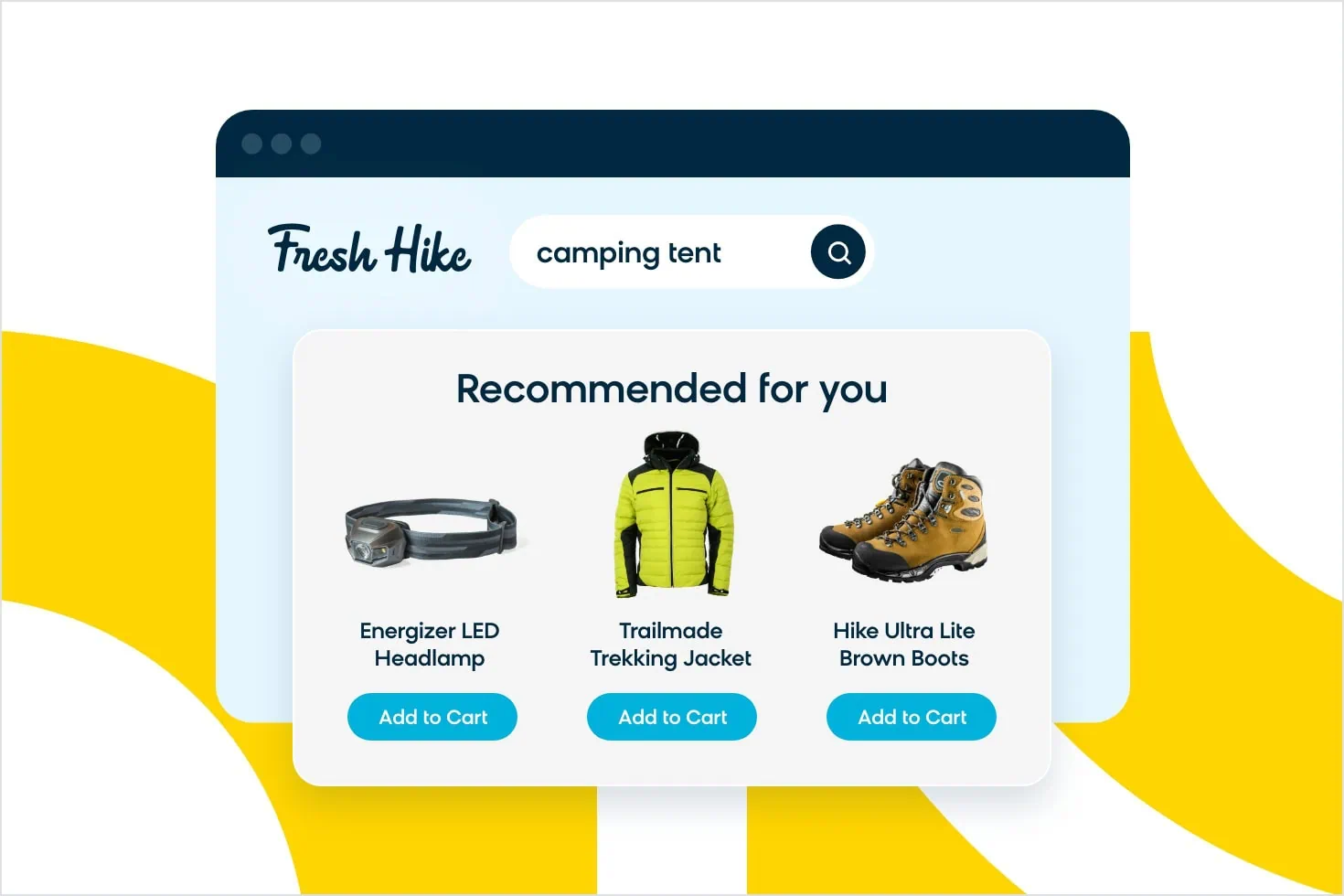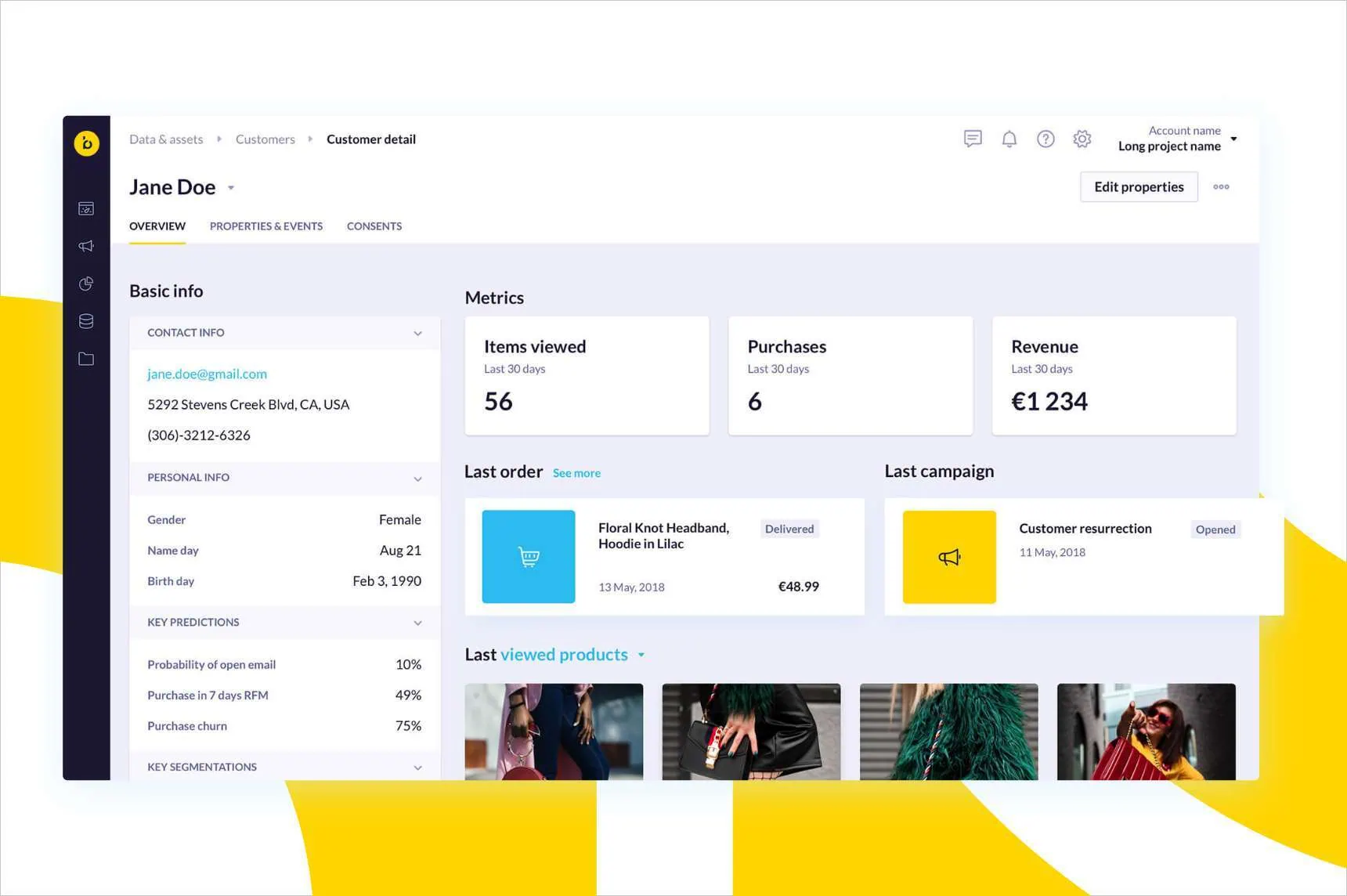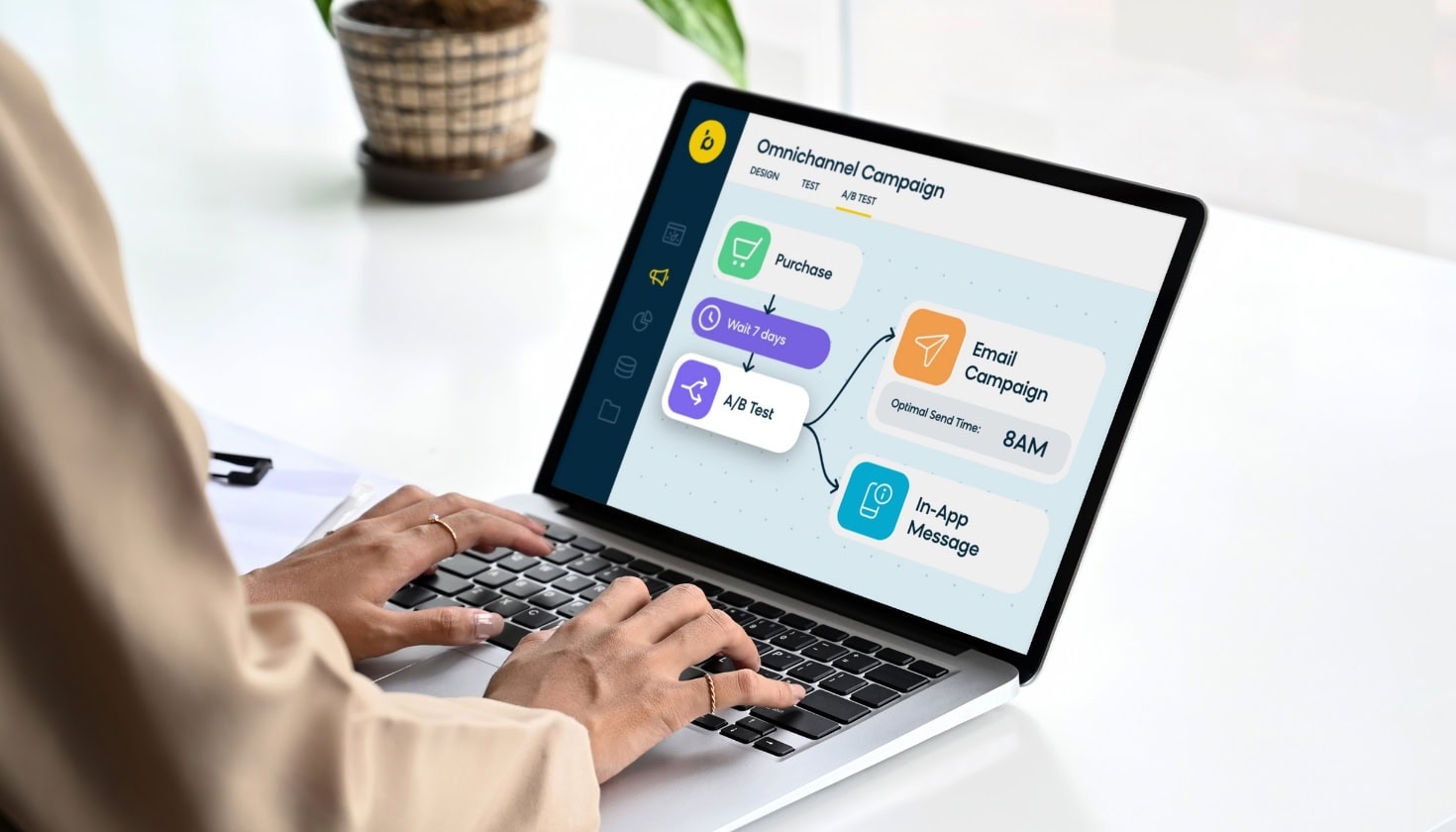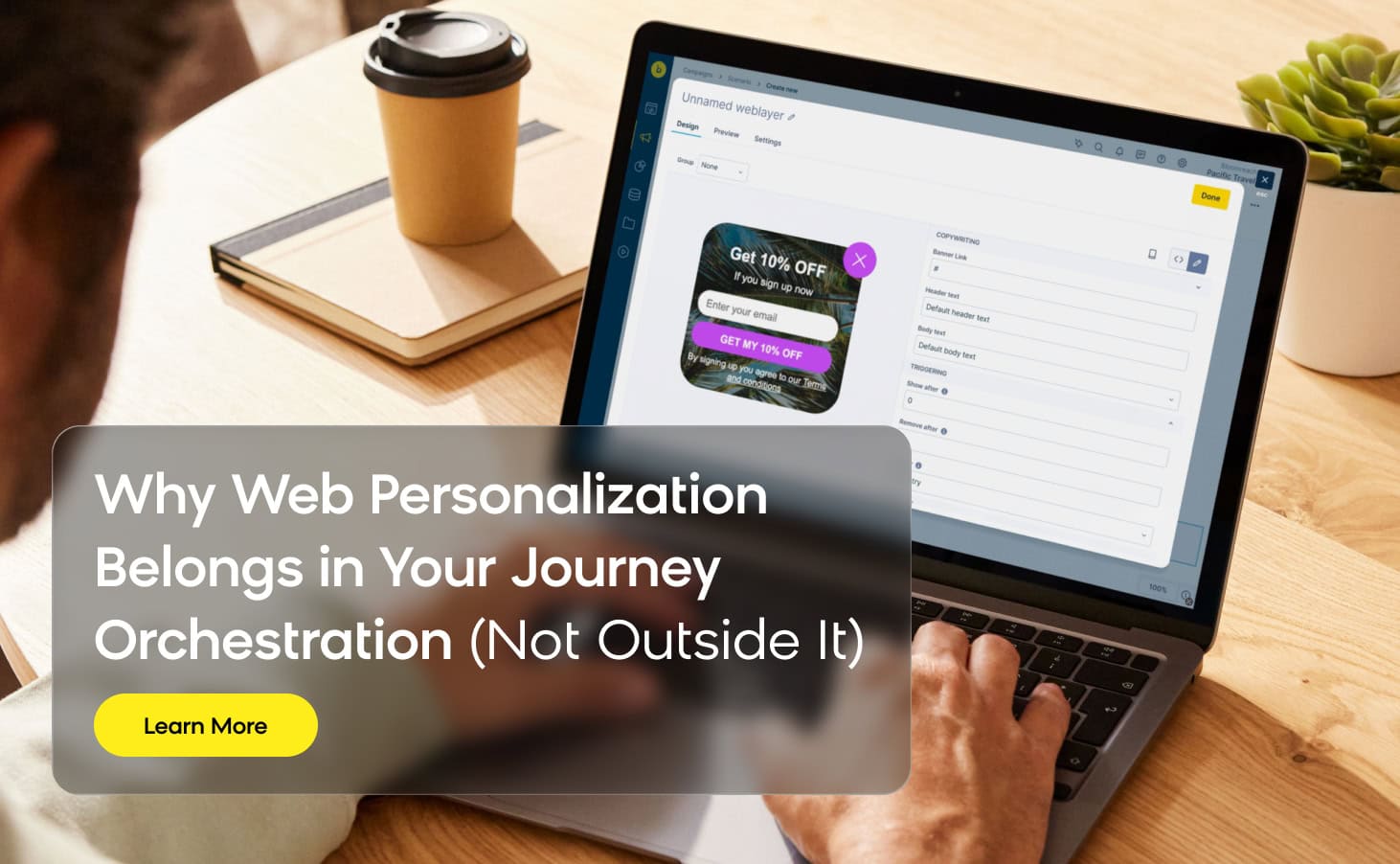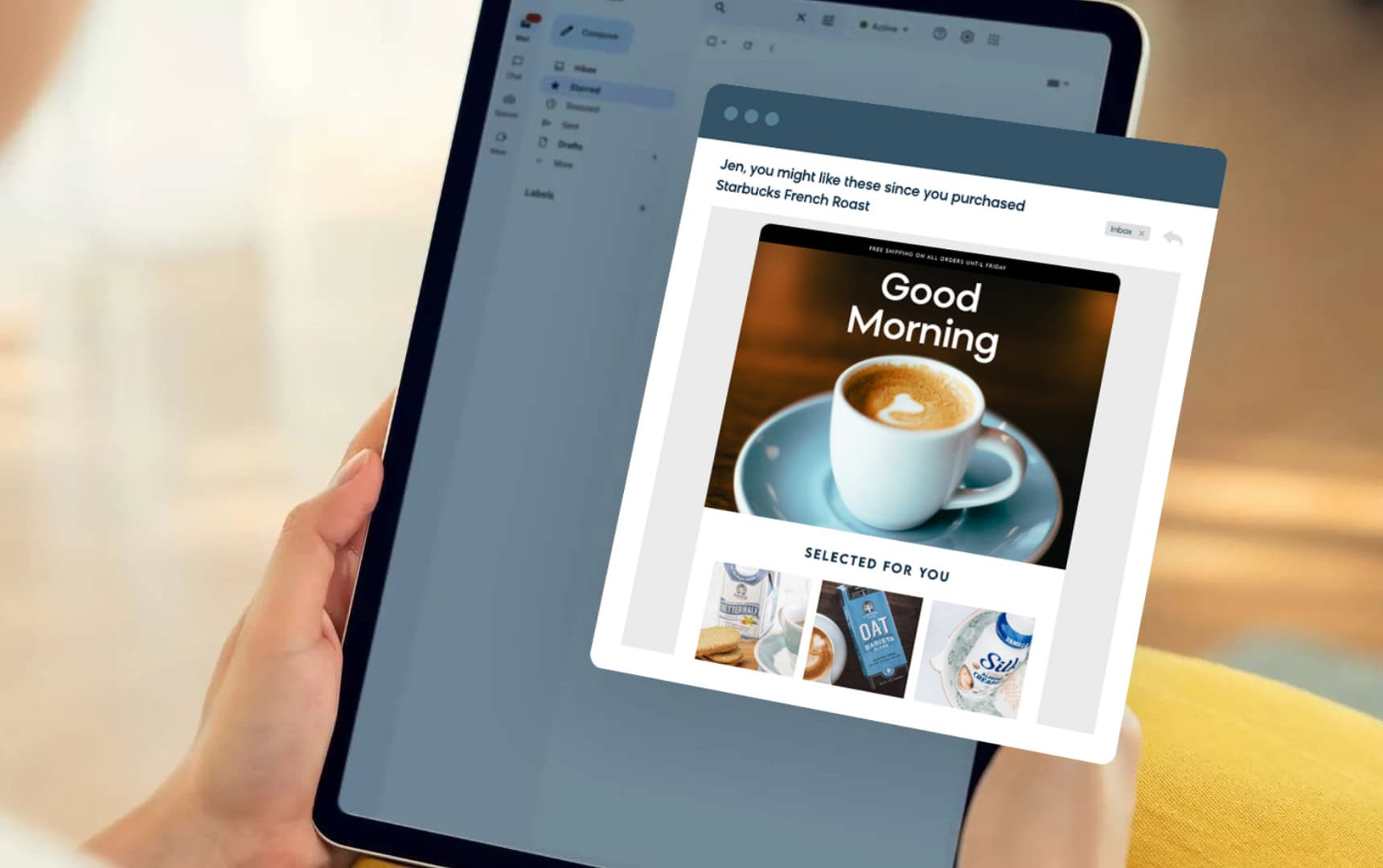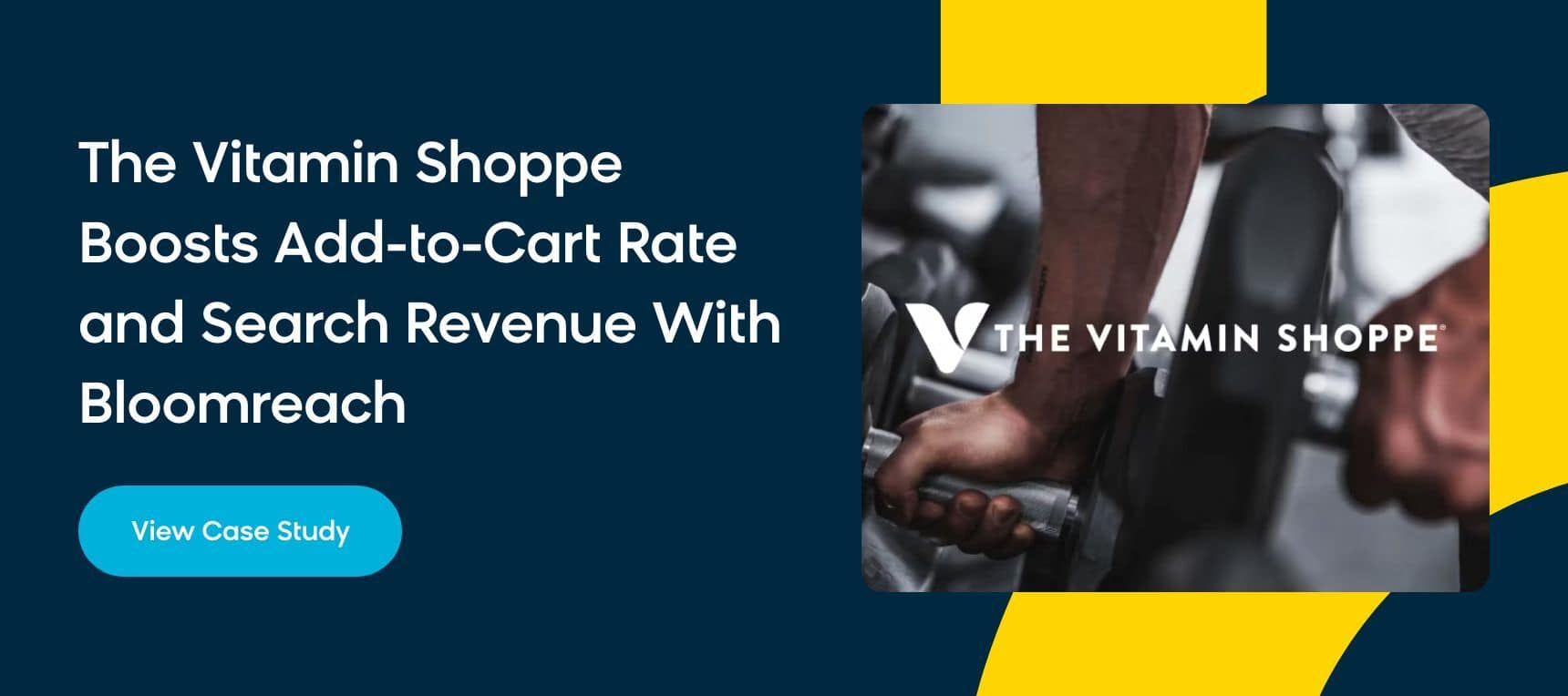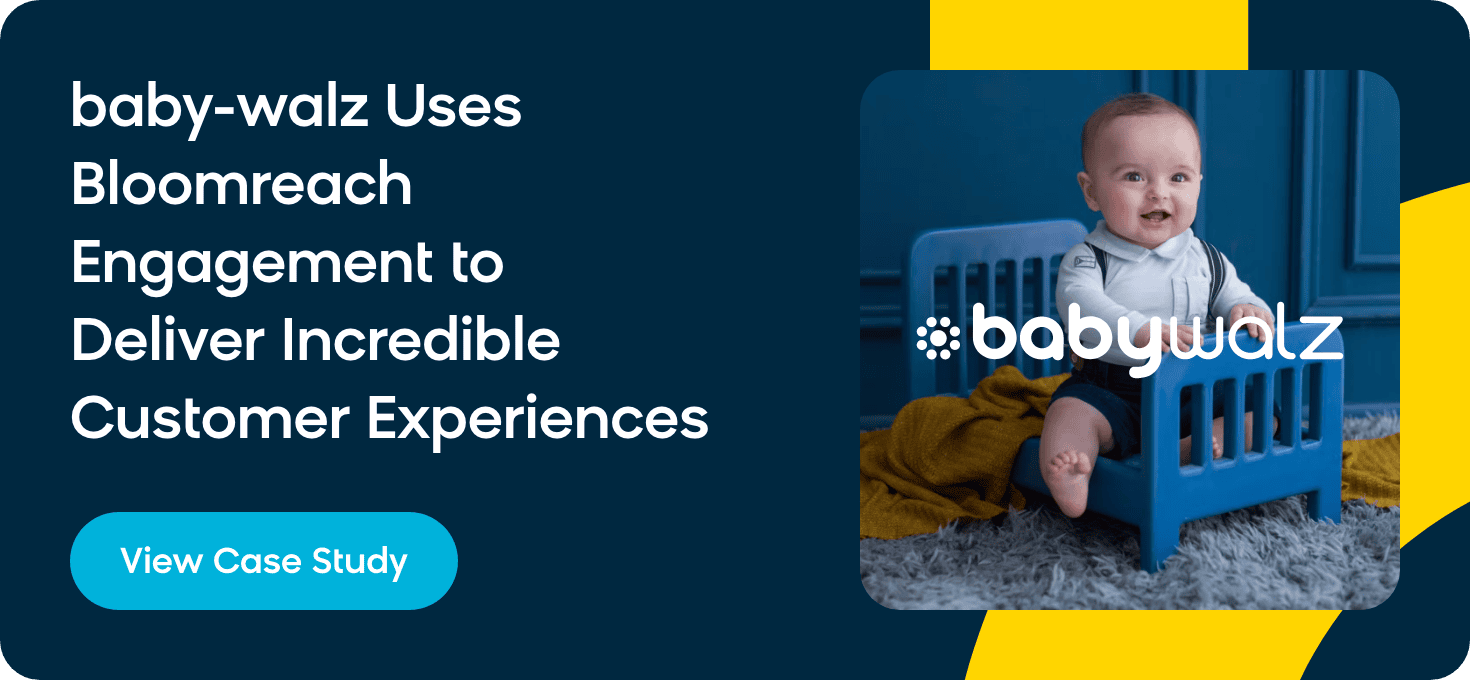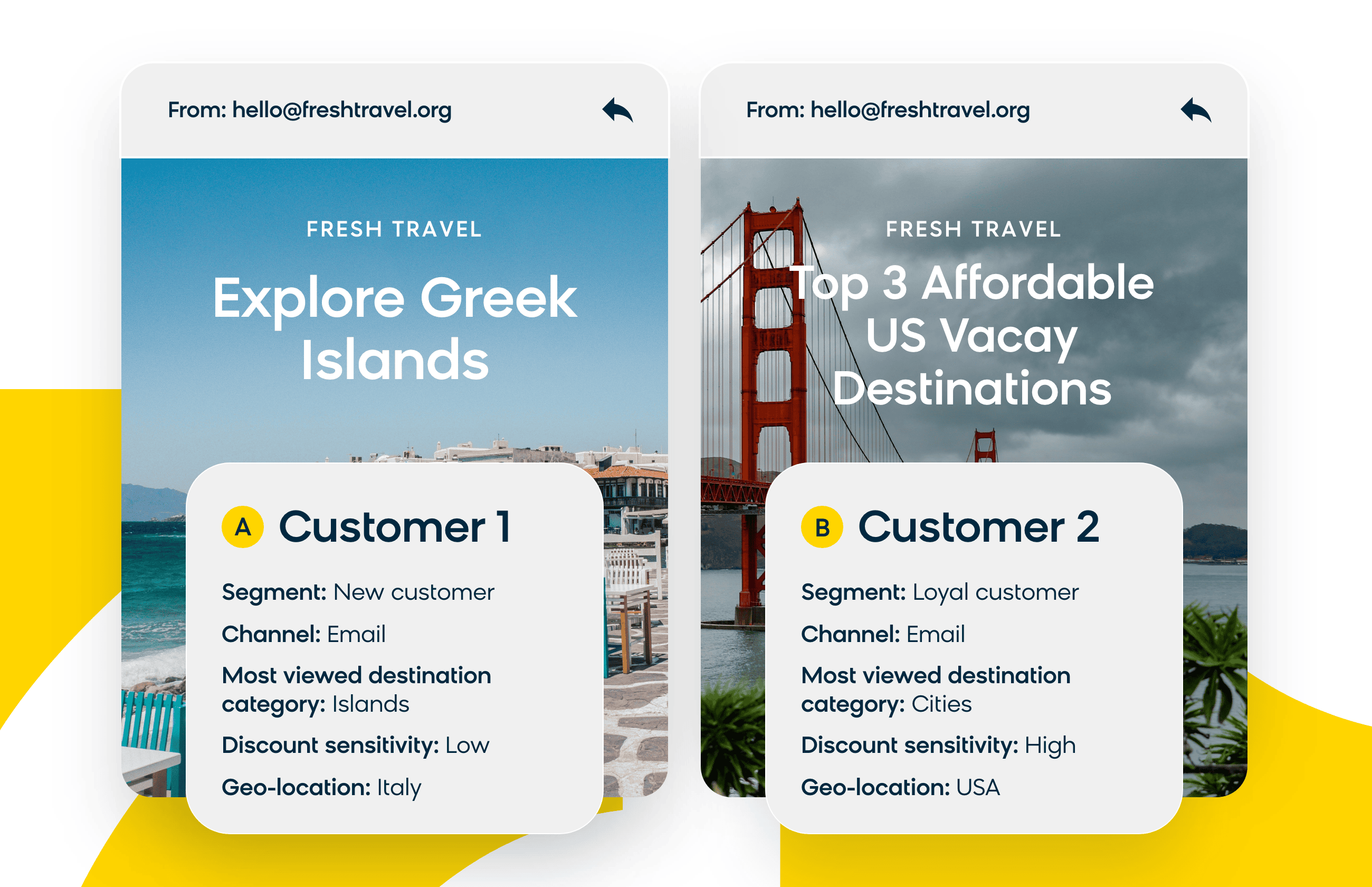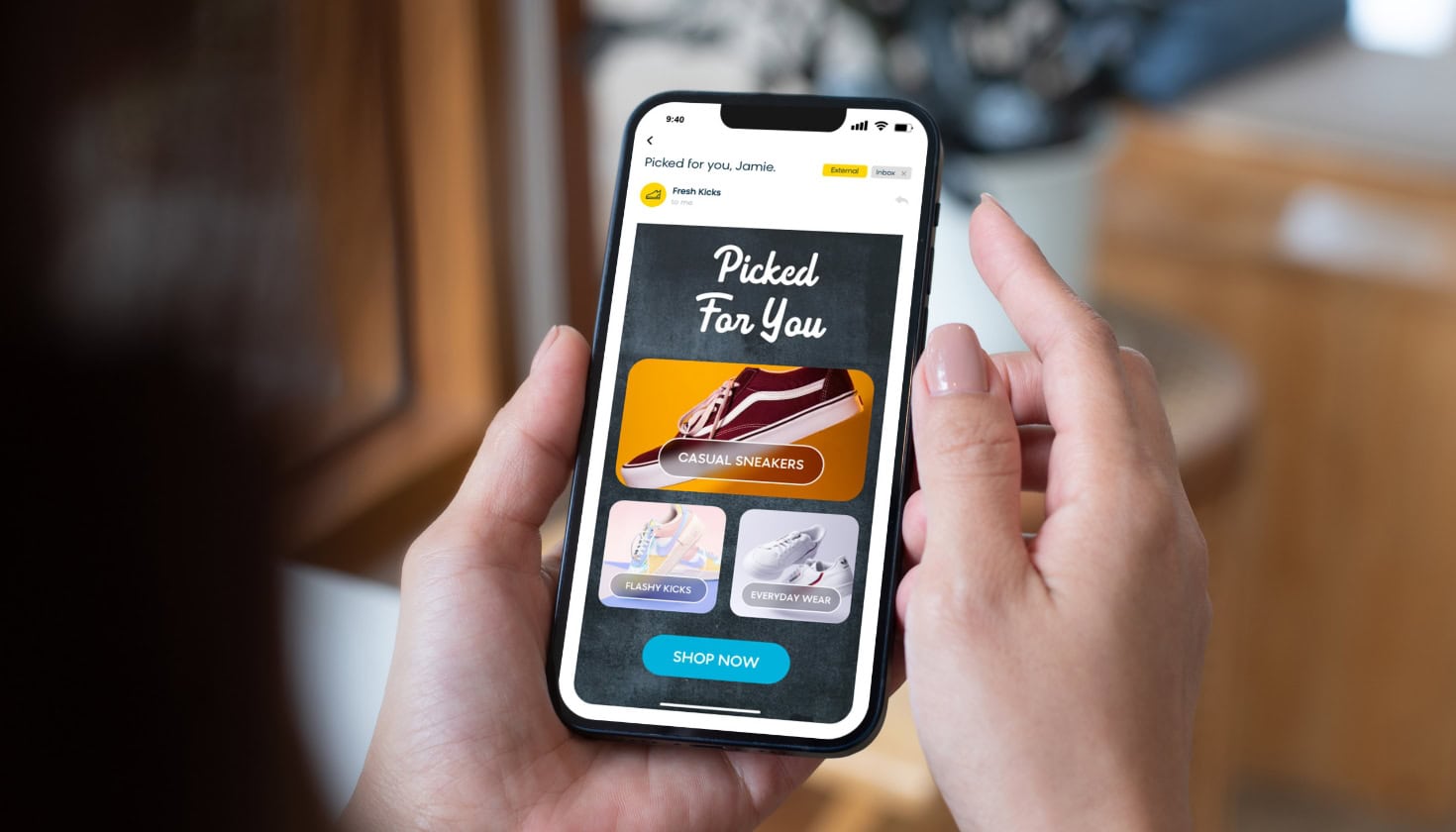Real-time personalization is the practice of instantly tailoring content, product recommendations, and user experiences based on a customer’s current behavior and preferences. Businesses using real-time personalization see up to 40% higher revenue compared to those that don’t.
This complete guide covers what real-time personalization is, how it works, proven implementation strategies, real-world examples, and actionable tips to boost your conversion rates and customer engagement.
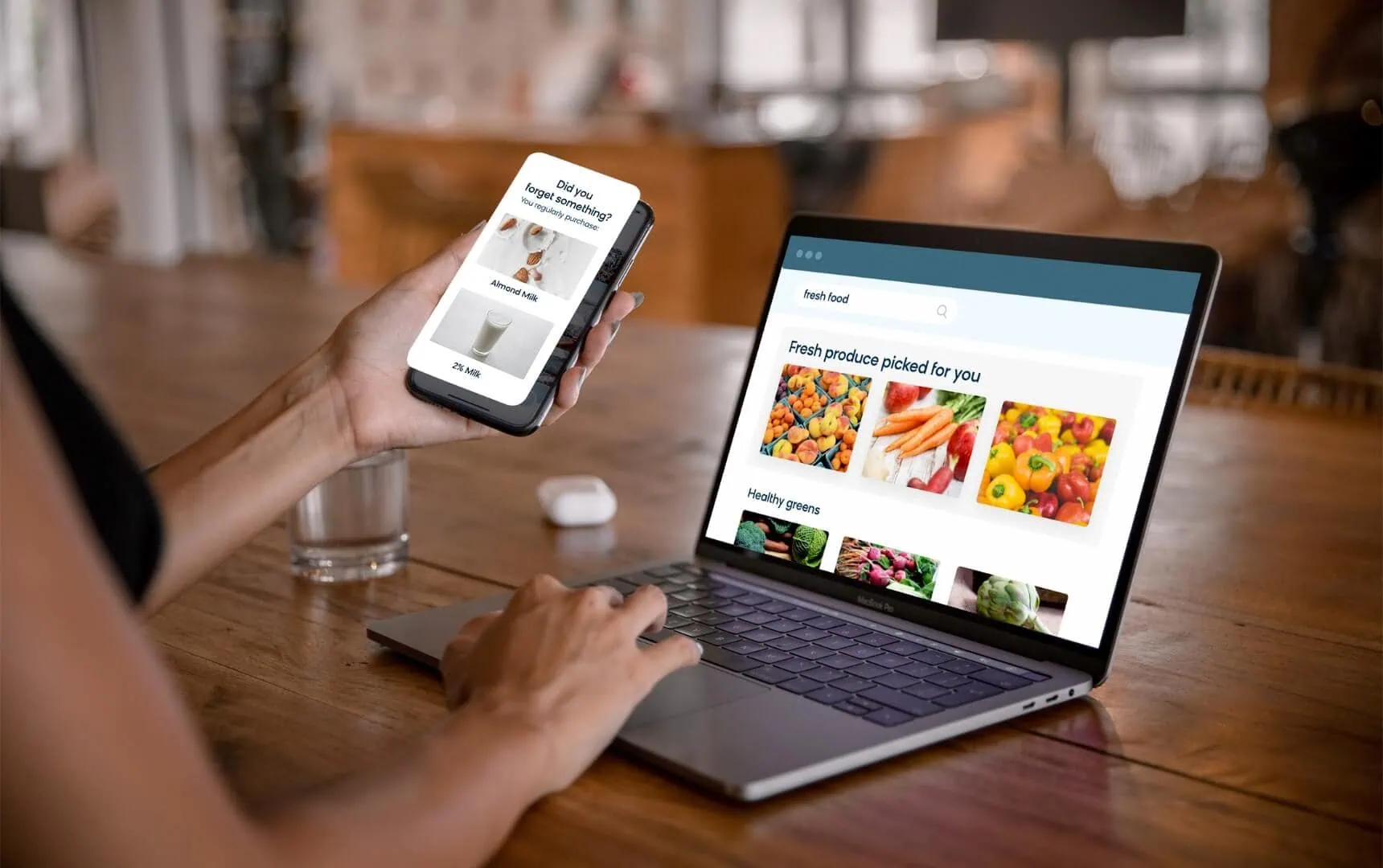
What Is Real-Time Personalization?
Real-time personalization refers to the practice of tailoring content and experiences to individual users in the moment based on their current interactions and behaviors. It’s the next evolution of ecommerce personalization, and it can adapt and learn from each interaction that your customers have with your brand.
The Significance of Real-Time Personalization
The ability to orchestrate personalized experiences that are relevant to your customers’ current needs is a game-changer for ecommerce businesses. It gives the online shopping journey a key component for success: a guiding hand to help customers find the products they’re looking for.
Simply standing up your online store is not enough to engage and retain customers online. You need to curate every touchpoint your shoppers have with your brand, learning from each new interaction to build relationships with your audience.
Personalization Enhances the User Experience
The main benefit of real-time personalization is the value it adds to your audience’s shopping experience. In today’s crowded marketplace, keeping your shoppers engaged can be a real challenge, and it’s in every ecommerce brand’s best interest to make their user experience as rewarding as possible.
74% of customers feel frustrated when the content they see isn’t personalized, and it’s easy to understand why. Without personalization, your customers are left browsing through product pages, receiving one-size-fits-all newsletters, and seeing generic ads, which just doesn’t cut it for modern shoppers. They expect your brand to know them, recognize and remember their preferences, and tailor the content you serve them to meet their needs.
Improved Engagement Drives Conversions
When you give your customers the personalized experience they expect, your business reaps the benefits. Real-time personalization isn’t just a principle that makes your customers’ shopping journey better — it’s a proven strategy that can have a huge impact on your business’ bottom line.
Companies that excel at personalization earn an average of 40% more revenue from their efforts compared to competitors. Plus, personalized marketing is a strategy that pays off with continued investment. Businesses can see returns as high as $20 for every $1 invested using advanced personalization techniques.
Between customer expectations and the value offered, ecommerce businesses can’t afford to ignore the advantages of real-time personalization.
How Real-Time Personalization Works
Real-time personalization is a dynamic process that requires a number of components to work seamlessly. You need the right data structure, the right marketing strategy, and the right marketing technology to make true personalization a reality.
Timely Personalization Starts With Data Collection
To make your personalized marketing function in real time, you’ll need proper data collection. You need up-to-the-moment data to fuel marketing efforts that tailor every step of the customer journey.
Monitoring your customers’ relevant actions, such as page views, clicks, and time spent on specific content is the key to building a user experience that caters to their wants and needs.
A single customer view (SCV) is the ideal end result of customer data collection. An SCV is a database where all your customer data is organized into unified customer profiles, offering a complete view of each customer and their relationship with your business.
With an SCV, you can glean valuable insights into when and where personalization will be most effective, like which channels your customers favor, the types of products they prefer, the time of day they tend to engage with your marketing efforts, and so on.
Relevant Marketing Requires Fully Integrated Channels
To obtain this holistic view of your customers, your entire ecommerce business needs to be integrated and sharing data in real time — everything from your website and ads to your email and SMS campaigns. There can be no data silos in your setup.
All your channels need to inform your customer experience as a whole, providing the latest information on each customer’s behavior so their journey can build on each new interaction, no matter what channel it may happen on.
This is why a comprehensive marketing solution is so essential for implementing a successful personalized marketing strategy. For truly tailored campaigns, you need every aspect of your ecommerce business to be united and sharing insights in real time. It’s the only way your emails can build on the insights gained from your latest SMS campaigns, your retargeting ads can fuel your customers’ next on-site shopping session, and more.
Read This Next: Why Siloed Email and SMS Marketing Platforms Fall Short Where All-in-One Solutions Succeed
Artificial Intelligence Powers Real-Time Marketing
With all your data unified and your channels connected, you’ll then need a tool to leverage your data and activate it intelligently across omnichannel campaigns.
This is where artificial intelligence (AI) comes into play — it’s the missing piece for real-time personalization that can weave all your systems, channels, and campaigns together.
Using advanced machine-learning algorithms, AI can help you determine what comes next in a customer’s journey at any given time by assessing all relevant information and forecasting the next best step. It does so by analyzing vast amounts of customer data and identifying patterns that might escape even the most experienced marketer’s eye.
These insights can help predict customer responses to different marketing strategies, allowing you to anticipate your recipients’ preferences and create tailored experiences that suit their needs.
With the power of AI, real-time personalization is capable of crafting incredible customer experiences. You can orchestrate marketing campaigns that learn and adapt to new information, incorporating each new data point to make an impact on your customer’s journey.
This is the elevated customer experience that modern shoppers expect, and it’s only possible with AI-driven personalization.
How To Implement Real-Time Personalization
Once you’ve committed to adopting a real-time marketing strategy, there are steps you need to take to make it a reality. Let’s take a look into the blueprint for making personalization work for you:
Define Your Personalization Goals
Before diving into the technicalities, it’s crucial to define what you aim to achieve with real-time personalization. Are you first and foremost looking to boost engagement? Is customer satisfaction the priority? What KPI do you want to aim for?
By defining specific, measurable goals, you can better design your personalization strategy to meet your desired outcome.
Unify Your Data
As we’ve already covered, real-time personalization thrives on data. Integrating all your data sources — from website analytics and CRM systems to email metrics and social media interactions — provides a comprehensive view of your customers that’s vital for effective campaigns. This holistic approach ensures you’re leveraging all available data to inform your personalization strategy.
Understand and Segment Your Audience
Knowing your audience is the cornerstone of effective personalization. You need to dive deep into your customer data to identify distinct customer groups based on demographics, behavior, preferences, and more.
This process of customer segmentation is the foundation for long-lasting customer connections. By grouping your customers into relevant and likeminded audiences, you can tailor content that resonates with each group, making your personalization efforts genuinely effective.
Read This Next: Customer Segmentation: Options Marketers Need To Know
Implement Real-Time Data Processing
This is the crux of real-time marketing — the ability to process data in the moment is what sets this strategy apart.
But storing and processing all your data in an instant requires robust technological capabilities, and not all personalization platforms can handle such an undertaking. You need a tool that is built to instantly react to new data inputs, which is exactly what Bloomreach offers.
Bloomreach Engagement’s unique in-memory framework infrastructure allows for split-second read/write data speeds and near-instantaneous reporting and execution. It’s designed for quick access to large swathes of data, making real-time marketing a real-life possibility.
Implementing systems that can process data in real time is the only way businesses can respond instantly to customer actions and deliver truly personalized experiences.
Test, Test, Test
A/B testing is invaluable in refining your personalization strategy. By comparing different versions of your personalized content, you can determine what resonates with your audience.
Personalization is a process that is constantly being refined, with campaigns and content continuously adapting to meet the needs of your customers. It’s impossible to find the right personalized message without trying different approaches. A/B testing allows you to do this, drawing insights from each new variation to see which approach works best.
Ensure Cross-Channel Consistency
Modern customers interact with brands across various channels, making cross-channel consistency an absolute necessity.
Each of your marketing channels needs to inform and support each other, expanding on the customer journey whenever your audience engages with your brand.
With the right marketing tool, this doesn’t need to be a tedious or troublesome task. An omnichannel marketing solution can sync all your channels seamlessly, so your emails, SMS campaigns, in-app messaging, web personalization, and more can be deployed using shared datasets for one unified message.
Read This Next: Why Web Personalization Belongs in Your Journey (Not Outside It)
Monitor and Analyze Your Campaign Performance
Personalization is not a set-it-and-forget-it strategy. Your campaigns need to continuously learn and adapt to your customers’ changing preferences, which means you need to monitor and analyze the performance of your efforts to make sure you’re reaching your personalization goals.
Leveraging real-time analytics is the key to understanding your campaigns. With ongoing analysis, you can determine what’s working and what isn’t and make informed adjustments and improvements.
Real-World Examples of Real-Time Marketing
With real-time data fueling your marketing efforts, personalization can be applied on any channel and at every touchpoint. But what do personalized campaigns look like? How can you craft a tailored experience that offers individualized journeys, and how effective can these campaigns actually be?
Here are a few examples of how you can leverage real-time data to personalize your marketing campaigns, along with some success stories that prove how game-changing personalization can be.
Product Recommendations
One of the most common personalized marketing strategies is product recommendations. These are suggested items served to users based on their individual browsing behavior, purchase history, and other interactions with your brand.
56% of customers are more likely to return to an ecommerce site that offers product recommendations, making them a worthwhile investment that many brands utilize. Plus, they can be woven into any stage of the customer journey, from a customer’s first website visit to reengagement campaigns.
Strategically showing customers recommended items that are relevant in the moment — like items that are similar to what they browsed during their last shopping session or products that pair well with items that are currently in their cart — can be a great way to encourage engagement, increase average order rates, and drive revenue.
Read This Next: Product Recommendation Tactics To Grow Revenue
How The Vitamin Shoppe Increased Add-to-Cart Rates With Personalized Recommendations
With help from Bloomreach, The Vitamin Shoppe utilized product recommendations to optimize category pages and drive organic search traffic. Our solution can deliver personalized product recommendations instantaneously (within 0.1 seconds of a user’s action) and The Vitamin Shoppe used this to its advantage to drive an 11% increase in the add-to-cart rate on its product category pages.
Dynamic Content
Dynamic content refers to personalized content that changes based on the user’s behavior, preferences, or real-time data. This can include varying images, messages, or offers to better suit the individual who is viewing it.
To make a meaningful impact on the customer experience, dynamic content needs to reflect the real-time interactions your customers have with your brand. As soon as a user’s preferences change or evolve, your content needs to adapt to meet their needs.
Adapting content based on a customer’s geolocation is a great way to dynamically appeal to customers — serving men’s winter coats to shoppers in cold climates instead of light jackets will lead to better customer engagement.
How baby-walz Boosts Email Open Rates With Dynamic Content
baby-walz, an online retailer of baby products, used Bloomreach to create the ideal customer journey for its shoppers using dynamic personalized content. The company asked for information from expectant mothers, such as the baby’s gender and expected due date, during the sign-up process for its marketing emails. This data was then used to create personalized email campaigns with content that was highly relevant to the customers and their current pregnancy stage.
With campaigns that served content fueled by real-time data, baby-walz was able to offer these expecting mothers a much more personalized experience with its brand, which resulted in a 53.8% increase in the average open rate of its personalized emails campaigns.
Contextual Personalization
Testing is important for any personalization strategy, but there’s a problem with the traditional A/B tests that marketers have always relied on: there’s a winner and a loser, and some customers don’t get served the right result for their unique preferences.
Contextual personalization solves this problem, using AI to serve the best variant to each customer based on their individual needs and current stage of the customer journey.
Contextual personalization does this by automatically analyzing all relevant customer data — when they usually engage with campaigns, what channels they prefer, what links they click on, etc. — to determine which content, offer, or channel will work best for them. This leads to each customer receiving the right variant in the moment, allowing the ideal customer journey to unfold in real time.
With contextual personalization, you no longer have to worry about sending someone a generic promotion — you can create individualized experiences that go above and beyond to offer hyper-relevant discounts, dynamic pricing, unique recommendations, and more.
How bimago Increased Conversions With Contextual Personalization
Using Bloomreach’s web personalization capabilities, the interior decoration retailer bimago experienced a 44% increase in conversion rates by using contextually personalized subscription banners. These banners dynamically changed based on the user’s behavior, which was more effective than traditional A/B testing.
Personalization Challenges and Solutions
Marketing personalization can have a huge impact on your business, but it’s not without obstacles. Here are some common challenges and solutions when implementing a real-time personalization strategy:
Scalability
One of the biggest challenges for ecommerce brands is the number and depth of necessary steps it takes to achieve real-time personalization. While personalization is a profitable and future-proof strategy, the detailed data analysis, the complex channel integration, and the intricate campaign execution required can be daunting.
Luckily, comprehensive solutions like Bloomreach Engagement make it possible to achieve personalization at scale. With all your channels and data unified in one platform, the ability to automate customer journeys, and the power of AI to weave it all together, you can create and iterate limitless customer experiences.
Personalization and Privacy Concerns
Great care and responsibility is vital when harnessing customer data for personalized marketing efforts. Your customers are trusting you with their information, and you need to honor that trust.
Fueling your campaigns with zero- and first-party data and maintaining GDPR compliance with proper consent management are just a few of the steps that marketers need to take to address privacy issues when building data-driven campaigns.
Choosing the right marketing technology is crucial to manage these concerns. Using a privacy-first solution like Bloomreach, you have everything you need to adhere to privacy rules and build trustworthy relationships with your audience. Our platform provides security support and privacy measures for all your marketing efforts.
How AI Is Shaping the Future of Real-Time Personalization
The role of AI and machine learning in real-time personalization is nothing short of revolutionary. These technologies enable businesses to analyze vast amounts of data at lightning speed, and as artificial intelligence becomes more and more sophisticated, it’s poised to completely change the way businesses and customers interact.
Hyper-Personalization With Predictive Analytics
Hyper-personalization offers the modern personalized experience that your customer expects. It goes beyond basic personalized marketing, like adding a customer’s name to the subject line of an email, by harnessing AI to predict what a customer will want next.
Hyper-personalization leverages real-time data to predict and anticipate the individual needs and preferences of your audience. It relies on machine-learning algorithms to analyze the unique relationship every customer has with your brand and forecast future behavior based on past interactions.
The beauty of predictive analytics lies in its ability to not just react to customer actions but to also anticipate needs before the customer even articulates them. Imagine visiting an ecommerce site or app and finding exactly what you need, before you even have to search for it — that’s the power of hyper-personalization, and it’s set to become a fundamental aspect of the ecommerce customer experience.
Conversational AI and Voice-Based Personalization
Conversational AI and voice-enabled assistants like Alexa and Siri are already transforming the way brands interact with customers, and they’ve opened the door for a new age of conversational commerce.
Conversational AI is now a fact of modern life, with AI-powered chatbots offering a streamlined way for customers to interact with brands. These tools rely on machine learning and natural language processing to understand user queries and provide relevant and accurate responses in real time.
The development and adoption of this technology is changing the way people live, work, and shop. For ecommerce brands, these tools can act as virtual shopping assistants and place AI at the center of the customer journey, creating a two-way conversational experience designed to make customers feel truly seen and heard by the brands they’re connecting with.
Bloomreach is at the forefront of this exciting new era of ecommerce with Bloomreach Clarity, our revolutionary conversational AI. With Clarity, customers can interface with AI in real time and get quick answers to important questions, easily purchase items without having to navigate through entire websites, and receive personalized recommendations based on their previously collected customer data.
Augmented Reality and Virtual Reality Personalization
Augmented reality (AR) and virtual reality (VR) are set to take personalization into new dimensions — quite literally. These technologies offer immersive experiences that users can interact with, and with these new experiences come personalization opportunities for brands.
From virtual try-ons in the fashion industry to personalized tours in real estate, AR and VR can create unique, engaging experiences that resonate on a personal level. And as these technologies become more accessible, you can expect to see them play a bigger role in real-time personalization strategies.
Start Your Real-Time Personalization Journey Today
Ready to boost your conversion rates with real-time personalization? Bloomreach Engagement delivers personalized experiences that drive 40% higher revenue and 3x better engagement rates.
See how leading brands achieve measurable results with our comprehensive real-time personalization platform:
- Implement AI-powered personalization in under 30 days
- Get real-time data processing with 0.1-second response times
- Access 200+ pre-built personalization templates
- Receive dedicated support from personalization experts
Ready to see what Bloomreach can do for you? Explore the Bloomreach Engagement features you can take advantage of to personalize the entire customer experience.
Frequently Asked Questions About Real-Time Personalization
What’s the difference between real-time personalization and traditional personalization?
Traditional personalization relies on historical data and predetermined segments, while real-time personalization uses current behavioral signals and AI to adapt experiences instantaneously. Real-time personalization responds to what users are doing right now, not just what they did in the past.
How fast should real-time personalization work?
Effective real-time personalization should deliver results within 100 milliseconds of a user action. Any longer delay can negatively impact user experience and conversion rates. Modern platforms like Bloomreach process data and deliver personalized content within 0.1 seconds.
Is real-time personalization GDPR compliant?
Yes, when implemented correctly. Real-time personalization must use consented first-party and zero-party data, provide transparent opt-out mechanisms, and follow data minimization principles. Working with privacy-first platforms ensures compliance with GDPR and other privacy regulations.
What budget is needed for real-time personalization?
Real-time personalization costs vary based on traffic volume, data complexity, and feature requirements. Entry-level solutions start around $1,000/month, while enterprise platforms range from $10,000–$100,000+ monthly. The ROI typically justifies the investment within 3–6 months.


